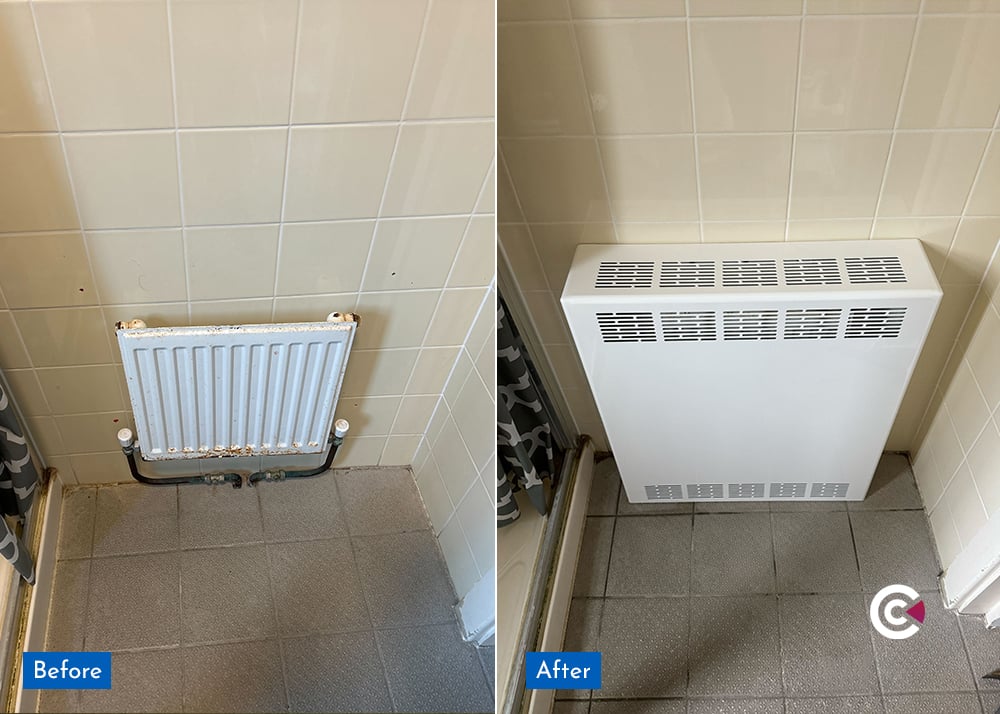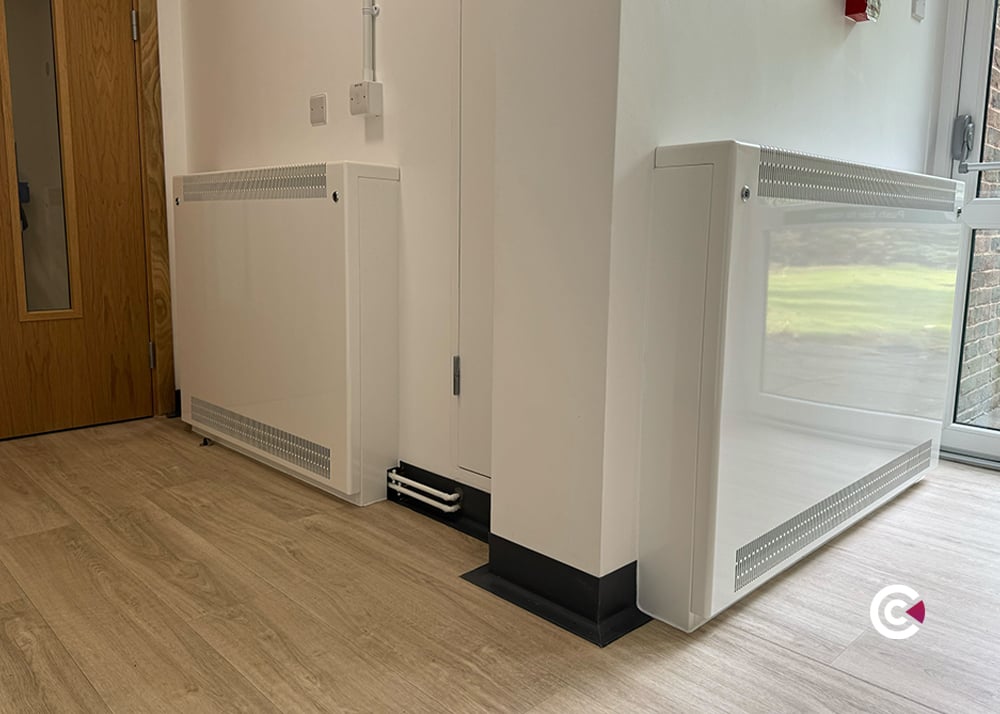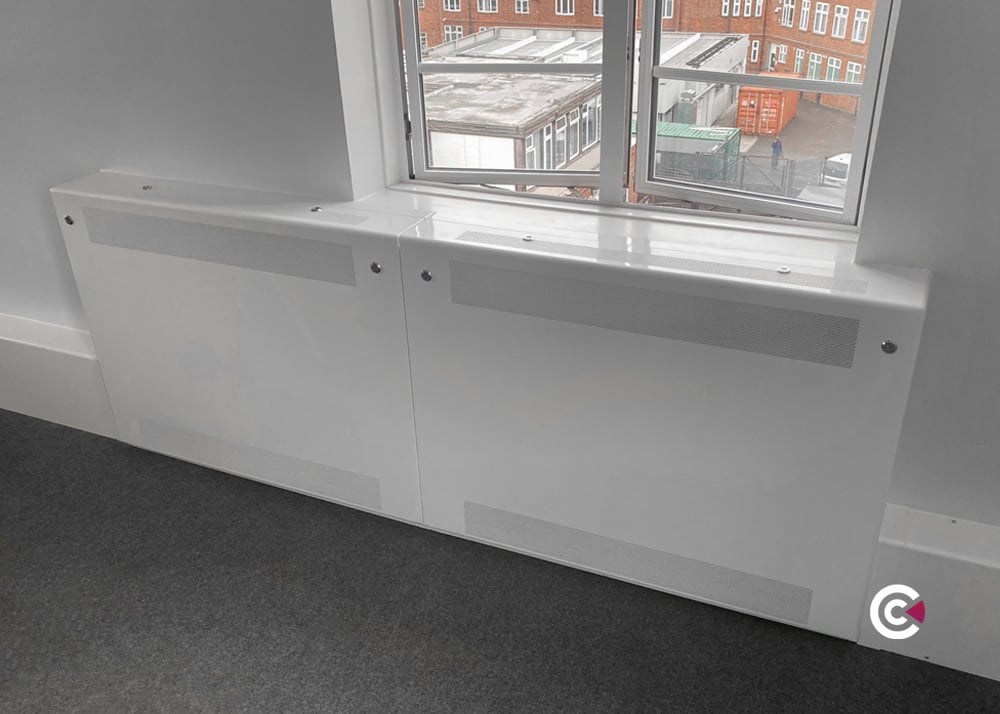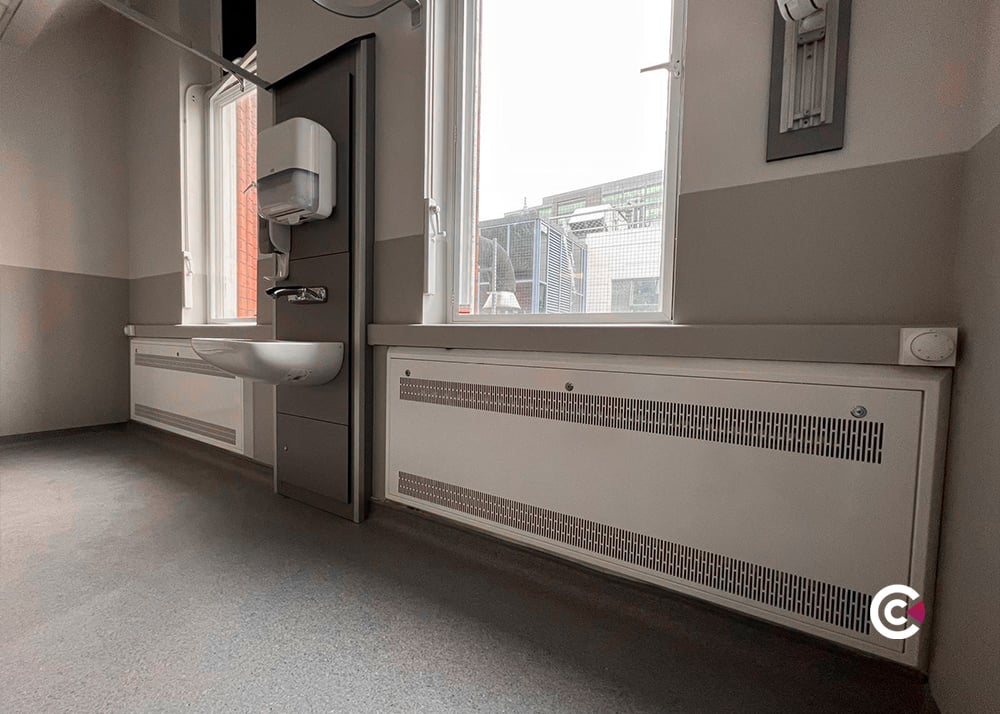Choosing the right radiator for your project is essential to create a safe and comfortable heating experience for everyone in the environment in the most effective and efficient way possible.
In this blog, we will talk about
The Ideal Type Of Radiator For Public Places
- Convector Radiators or Panel Radiators?
- Radiator for public spaces: Is a fan heater better than a convector heater?
- Can Heat Pumps Be Used With Radiators?
- The Benefits of Using Radiators with Air Source Heat Pumps
- How Much Bigger Do Your Heat Pump Radiators Need To Be?
- How Much Do Heat Pump Radiators Cost?
- Regulations For Fan-Assisted Radiators With Hot Pumps
How To Maximise Your Radiator's Energy Efficiency Considerations When Making Radiator Selections For Your Environment
- Main Elements Of Modern Heating
- The Importance of Choosing The Right Heating System For Educational Institutions
- How To Choose the Right Radiators for Commercial Environments
- How To Choose the Right Radiators for Commercial Environments
Looking for more information? Click on each header to check out the expanded posts, where we look at each of these areas one-by-one in more detail, offering practical advice and expert insights on how to pick the right radiator for your project.
The Best Type Of Radiator For Public Spaces
Convector Radiators or Panel Radiators?
Two of the most typical radiators you will find when specifying, convector radiators and panel radiators are both convection heaters – a type of radiator that uses convection to efficiently and quickly heat a room.
Convection occurs when warm air produced by the heat emitter rises and circulates the room before it cools down and descends. It is then heated by the convector again and so on. This cyclic motion (called convective circulation) results in even temperatures throughout a room much faster than traditional radiators.
One of the primary distinctions between a panel radiator and a convector radiator is the configurations of their “convector fins”. The lamellar structure you can find in convector radiators reveals more heat transfer surface per unit volume, which makes heating more efficient.
With convector radiator being the obvious better option, there often is a dilemma of having to compromise on aesthetics for performance. The Sovereign range solves the problem by adopting the sleek and stylish designs, with some more advanced functionality added on top of all the benefits of a traditional convector radiator.
|
Radiator Type |
Panel Radiator |
Convector Radiator |
|
Convector Fins Configuration |
Plate fins |
Lamellar fins |
|
Fan-Assisted |
No |
Yes |
|
Heat Transfer Efficiency |
Less efficient |
More efficient |
|
Compatible Heat Source |
Gas boilers |
Sustainable heat sources, such as heat pumps |
Radiator for public spaces: Is a fan heater better than a convector heater?
When choosing the right heater for a public space, you might stumble upon the question of whether a convector heater or a fan heater is the better fit?
While fan heaters are often seen as a more economical option, the drawbacks of using them in public spaces certainly outweigh the benefits.
|
Pros |
Cons |
|
|
On the other hand, convector radiators are
- More efficient at lower power consumption
- Safer with no electrical components exposed
- Cost less to run
- Offer even heat distribution without stripping the moisture out of the air
That makes them a far superior choice for public spaces like offices, showrooms or waiting rooms. The Sovereign Range are convector heaters with lamella heat exchangers, which provides exceptional warmth output and maximum comfort. We even took an extra step to ensure optimal safety by eliminating sharp edges, and opted for a safer design that is robust and aesthetically pleasing at the same time.
The Big Shift from Gas Boilers to Heat Pumps
With the UK Government's ambitious goal of achieving net carbon zero by 2050 and their plan to phase out gas boilers in new homes from 2025, there comes a major impact on the Heating, Ventilation and Air Conditioning (HVAC) sector as traditional gas boilers are being phased out - so what is their replacement? Could heat pumps be used with radiators as an efficient solution? As the government invests heavily in heat pump innovation, now is an excellent time to learn more about what heat pumps are and how they work.
Can Heat Pumps Be Used With Radiators?
Spoiler alert: Radiators DO work with heat pumps.
While radiators can work with heat pumps, it doesn’t mean your existing emitters will too.
Traditional radiators are designed for use with gas boiler systems that operate at a higher temperature input, so they can struggle to produce optimal levels of heat when used in combination with heating pump systems that typically run at lower temperature inputs. In this case, to achieve the same heat output, you would need a much larger radiator (which is simply not a feasible solution).
Another more sensible option that allows you to switch to heat pumps without sacrificing the aesthetic elements and taking up extra spaces, is to choose low water content radiators instead.
By making smart decisions today we can equip our environments with futureproof solutions to stay ahead of the trend and be the leader of the industry, while helping your customers to gain maximum benefit from it.
The Benefits of Using Radiators with Air Source Heat Pumps
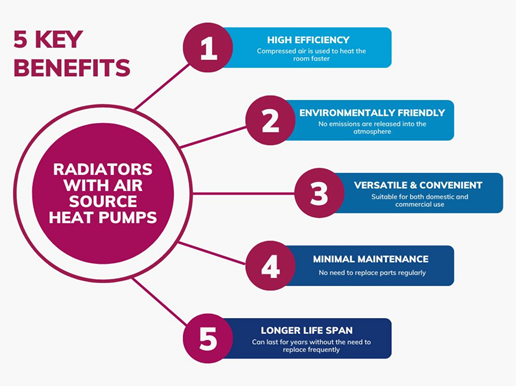
How Much Bigger Do Your Heat Pump Radiators Need To Be?
Some rules to keep in mind when considering radiators for heat pump systems
1. The larger the space, the larger the heat pump should be
2. Choose a fan-assisted model to maximise heat output and cancel out the need for an increase in radiator size; Or else opt for a radiator 2.5X larger than a traditional radiator
3. Choose radiators made of high thermal conductive materials (e.g. Zintec Steel) for efficient heat transfer
Should you size the radiator yourself?
Figuring out what size radiator you need for your project involves a lot of calculations with different variables to take into account. We recommend talking to our team of experts and let us work with you to find the perfect-sized radiator for your needs
How Much Do Heat Pump Radiators Cost?
The actual price of a heat pump radiator largely depends on the size of it – the larger a radiator is, the more expensive it will be. While heat pump radiators are typically more expensive than a regular panel radiator at an average price of £1,000, the energy savings you gain will recoup the cost in the long run.
Heat pump radiators lower your energy costs in 2 main ways:
Lower Energy Consumption
As heat pump systems run at low temperature, low water content radiators like the Sovereign range are an ideal match. They could achieve the desired temperature more rapidly with less heat wasted from unnecessary overheating.
Better Heating Efficiency
Fan-assisted radiators could optimise the heating efficiency by facilitating even heat distribution throughout the area without the need to oversize the radiator that would otherwise drive up the price. The fan also speeds up the heating process and the desired level of heat could be achieved in shorter time.
Regulations For Fan-Assisted Radiators With Heat Pumps
In the United Kingdom, fan-assisted radiators must be installed under Building Regulations if they are used in combination with heat pumps. All fan-assisted radiators must meet the performance requirements of BS EN 442 – a European Standard for radiators and convectors.
- The fan-assisted motor should not restrict fan speed or airflow unless specified during installation.
- The motor must have a minimum power rating of at least 10W for room-sealed fan-assisted radiators.
- A flow switch should be fitted downstream of the fan-assisted radiator to prevent heating before fan operation.
- Fan-assisted radiators must be sited and installed according to manufacturer instructions to ensure optimal performance at all times.
It is important to comply with these regulations, as failure to do so could result in illegal operation and damage to equipment.
Maximise Energy Efficiency: Keep the Heat Up and Your Cost Down
Common features of an energy efficient radiator:
- Smaller radiator size
- High thermal conductive material: aluminium, copper or Zintec Steel
- A thinner radiator
- Has a heat exchanger
- More expensive
Why Is a Heat Exchanger Important?
The heat exchanger might contribute a lot more to your energy savings than you expected.
Heat exchangers enable heat transfer between the heat source and the heated fluid. A solid wall may separate the fluids to prevent mixing or being in direct contact. Coming in two varieties: radiator-type and lamella-type, these devices use water and air respectively as their mediums to transfer heat.
The 3 main benefits of using a heat exchanger in a heating system:
- They maximise energy efficiency by transferring heat to where it’s most needed
- They're a versatile choice that suits a variety of heating applications, e.g. residential, commercial, leisure and health care
- They are affordable and cost less time and money to install
In short, if you’re looking to reduce the carbon footprint and the overall cost of your project, you need a radiator with a heat exchanger. A lamella heat exchanger is the best type available on the market today.
3 Ways You Can Heat Up A Commercial Space Efficiently
Despite emergency measures being taken by the UK Government to offset it, whether you’re a homeowner or a business owner, you’re going to be in for a surprise when heating bills land. This problem is going to be amplified for those responsible for heating large commercial spaces or even schools and public areas, posing the question, ‘Is there a way to heat up commercial spaces more efficiently?
Here are 3 ways to achieve it:
Use Natural Ventilation To Increase Heating Efficiency
Simple and needs no extra equipment to do so.
BUT… it only works under certain circumstances, and is not suitable for places with a cold and wet outdoor environment, which would counteract the heat from the radiator.
Install Underfloor Heating
They heat up spaces 25% faster than conventional radiators can.
BUT… you’ll need to dig up the flooring completely, and that comes with a high construction cost.
Get Energy Efficient Radiators
A straightforward solution for the fundamental problem.
Heating more efficiently doesn’t need to mean ripping out an old system and replacing it. Something as straightforward as finding new energy-efficient radiators for your commercial spaces can make heating up your space far quicker.
Aluminium for instance heats up 15% quicker than other radiator materials. Something as simple as the material, or having fan-assisted or emitter models also contributes to faster heating.
Finding options that work to this level of efficiency are going to be official for your commercial fit-out.
Considerations In Radiator Selection In Different Settings
3 Main Elements Of Modern Heating
While the primary function of a radiator is to provide heat, a modern heating solution should offer more than just the basics. A high-quality heating system typically comprises three essential elements:
- Safety
- Sustainability
- Style
Interior design plays a crucial part in building a commercial space of satisfaction. It’s important to find energy-efficient radiators that complement your design well, which creates a crossover of function and fashion that positively impacts the people using the space.
Radiators aren’t necessarily the first consideration for interior designers. But if your project requires a high-end solution for a commercial or luxury space, you’d like to look for sleeker and more stylish options. Apart from a sleek and subtle design, colour matching your radiators using a RAL chart could also help them to blend seamlessly with the room.
The Importance of Choosing The Right Heating System For Educational Institutions
Space heating alone accounts for almost 50% of a building's energy consumption, highlighting the importance of minimising energy bills. On average, European universities spend £8.10 per square meter annually on heating, which is a substantial expense for educational institutions.
Additionally, maintaining a stable and comfortable temperature in classrooms is essential for promoting an optimal learning environment. Students in classrooms that are either too hot or too cold tend to experience discomfort and distraction, leading to poor academic performance, and deteriorating their ability in decision-making.
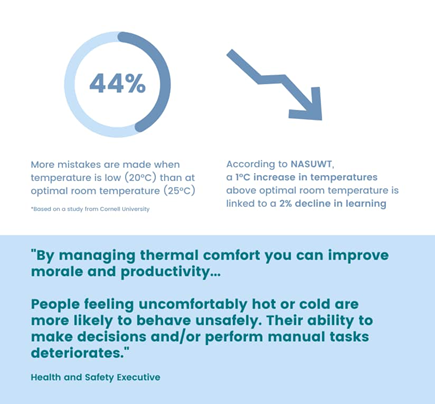
How To Choose the Right Radiators for Schools
When choosing radiators for schools, key factors to consider include safety, sizing, control & efficiency, and design.
Safety
Guidance on minimum temperatures is provided by the Education (School Premises) Regulations 1999, stating “Each room or other space in a school building shall have such a system of heating, if any, as is appropriate to its normal use”.
|
Areas |
Temperature |
|
With a lower-than-normal level of physical activity due to sickness or physical disability (e.g., including sick rooms and isolation rooms, but not other sleeping accommodation) |
21°C |
|
Normal level of physical activity associated with teaching, private study or examinations |
18°C |
|
With a higher-than-normal level of physical activity (e.g., arising out of physical education) and washrooms, sleeping accommodation and circulation spaces. |
15°C |
Accurate Sizing
Each room's needs vary based on factors like size, insulation, and usage patterns. Professionals use heat loss calculations, considering dimensions, insulation, and external factors like windows and doors, to accurately calculate the required heat for each room. The right radiator size ensures optimal performance and energy efficiency.
Valve Selection and Thermostatic Control for Energy Efficiency
The flexibility to adjust room temperatures based on activity levels is crucial to meet minimum and maximum temperature requirements outlined in Building Bulletin 101 (BB101). Valves suitable in school settings, such as thermostatic radiator valves (TRVs), manual valves, and lockshield valves, facilitate easier operation and could provide precise control of heating output for individual rooms.
Design
With customised front panel designs, radiator covers can be used as a tool to enhance an environment’s aesthetics and create a more positive learning environment, particularly in early education settings.
- Enhance creative aesthetics and foster a positive and supportive learning environment
- Showcase the values and branding of your learning environment
- Support learning in young children through interactive and inspirational designs
How To Choose the Right Radiators for Commercial Environments
- Size of the space that needs heat Radiators come in a variety of sizes, so it's important to choose one that will be able to heat the space effectively.
- Type of heating required Some radiators are better suited for certain types of heating than others. For example, radiant heaters are useful in commercial spaces due to a more even distribution of heat.
- Climate In some areas, it is necessary to choose a radiator that can provide ambient heat with a low surface temperature.
- Budget Radiators can vary in price, so it's important to find one that fits within the budget of your project.
Why Sovereign Could Be The Answer
Sovereign – Contour’s brand-new range of stylish designer radiators can be incorporated into a variety of locations. This range of low water content radiators is perfect for a commercial setting and comes in different sizes offering emitters capable of warming the largest of open spaces. Whether floor-mounted, wall-mounted, free-standing, or functional as a bench heater.
Available in four different models, Sovereign can work on existing heating systems or heat pump systems, providing far more efficient options for commercial spaces. With options of natural convection or fan-assisted models through the Contour Sovereign range, commercial spaces can be heated two times faster than traditional radiators.
The sleek and stylish designs add extra aesthetic value to the range. A diminutive size allows them to blend in with the surroundings in perfect harmony and perform their function effectively without compromising quality.
While the Sovereign range covers a wide range of applications, it is not a “one for all” type of solution. In some cases (e.g., environments with high humidity), other types of radiators may be a more suitable choice.
After all, the best radiator is the one that suits your project’s needs the most. Get in touch and discuss your project with our experts today to see how we can help.
-1.png)


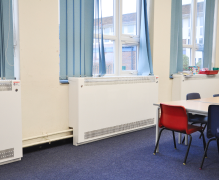
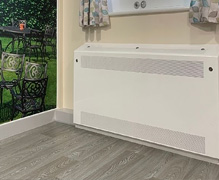
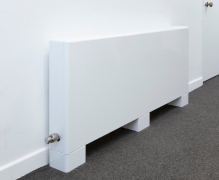

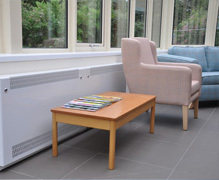

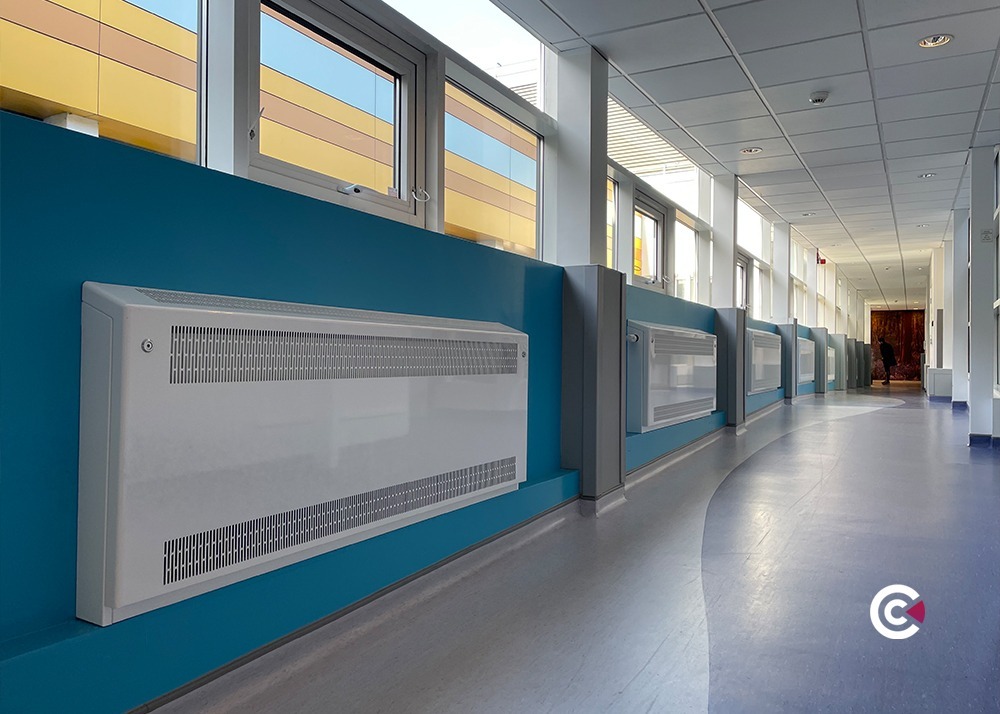
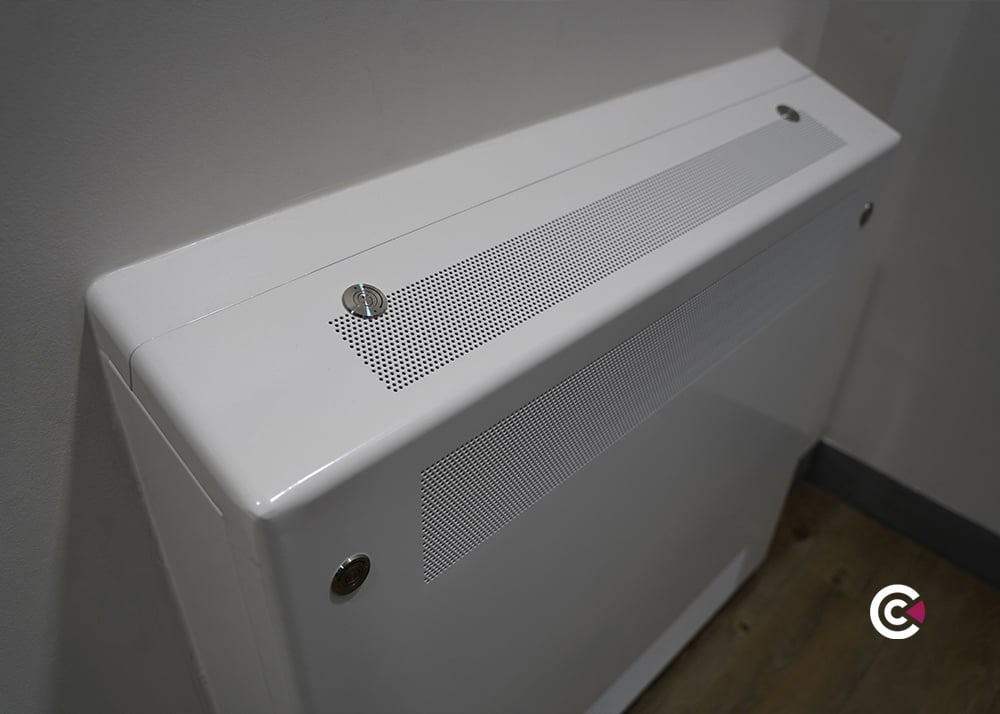

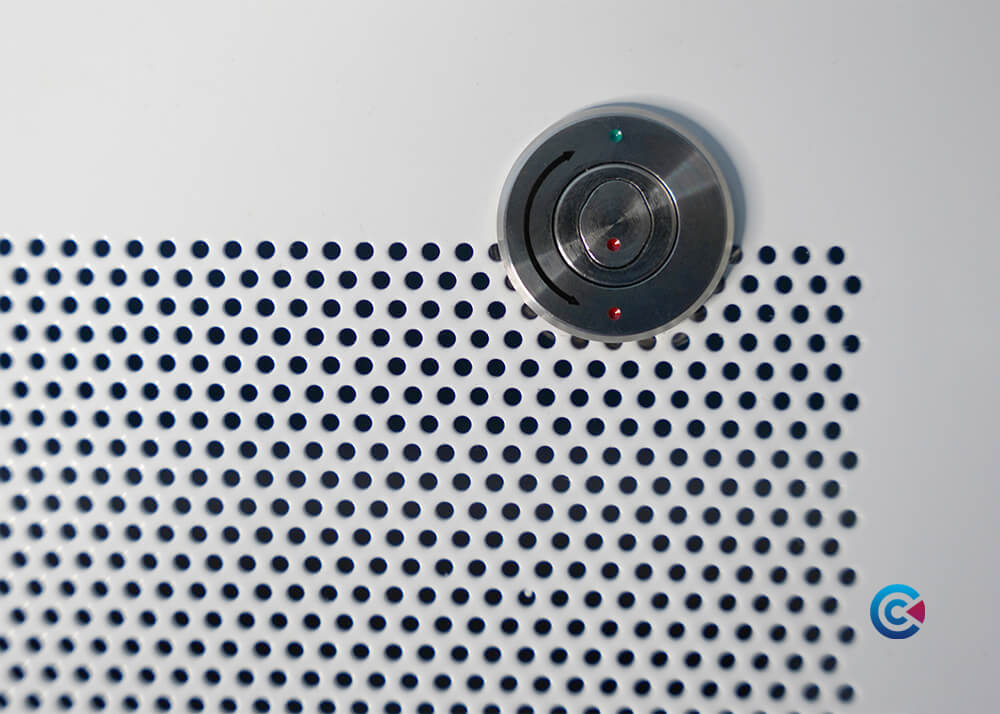




/anti-ligature%20vent%20grilles.jpg)

